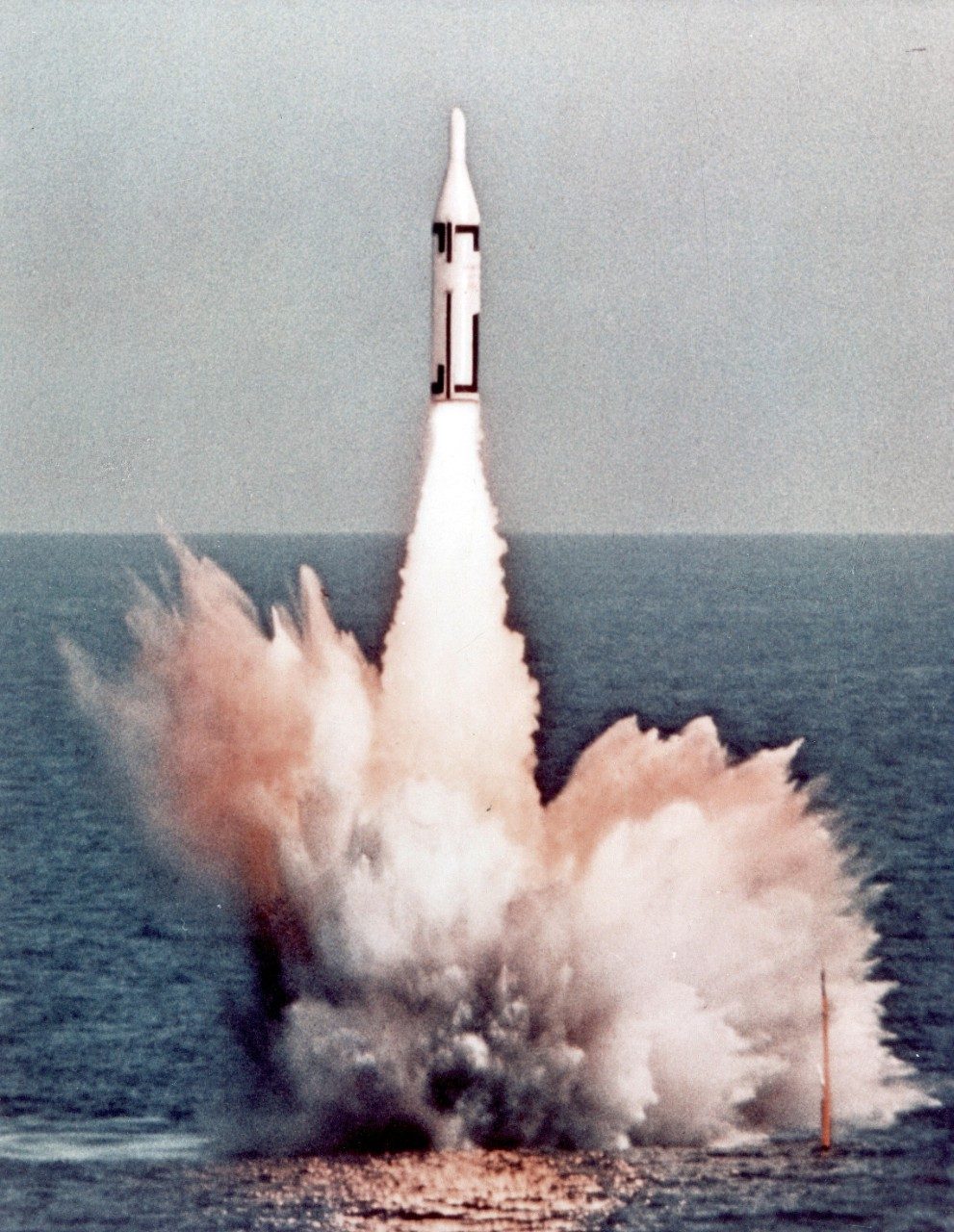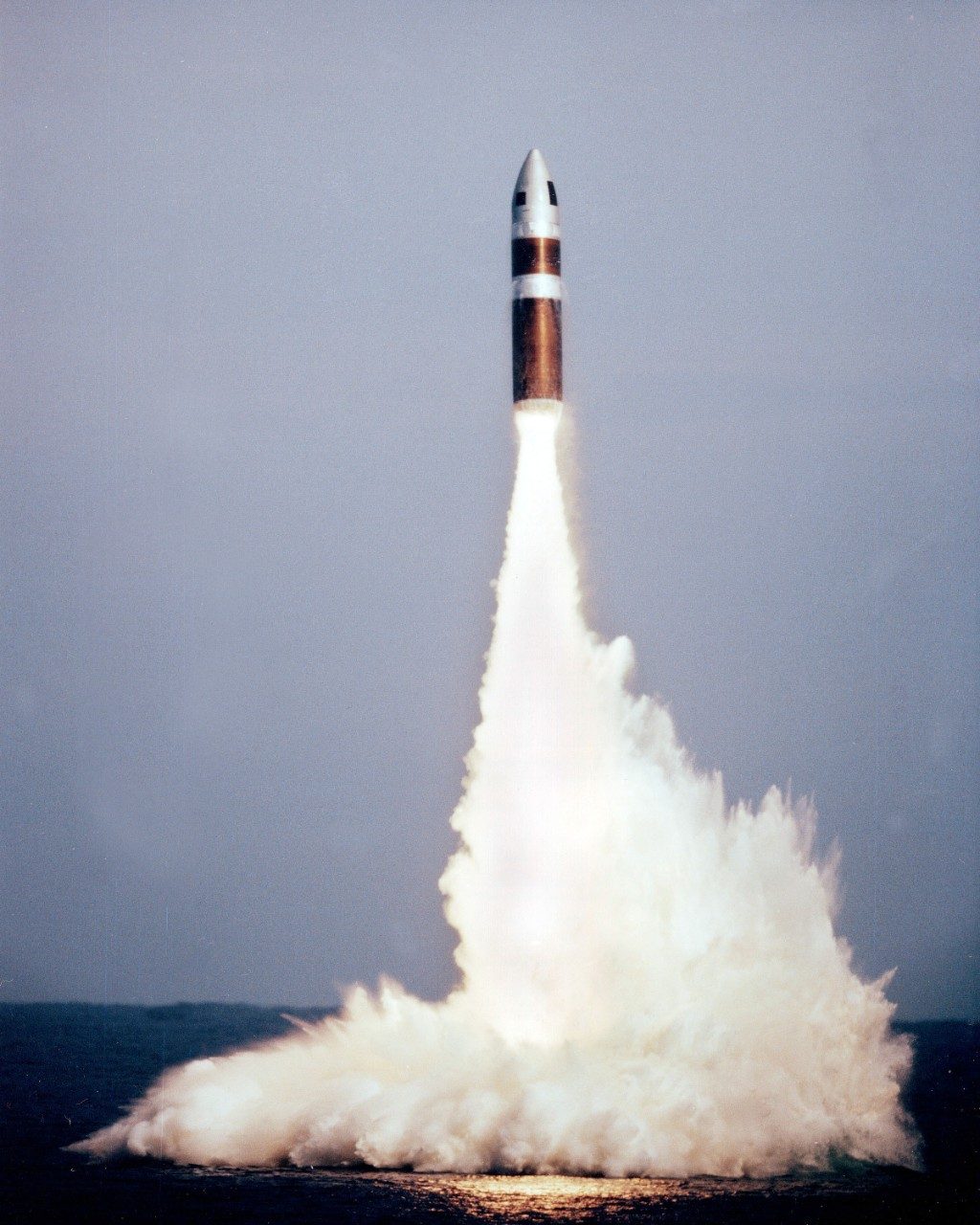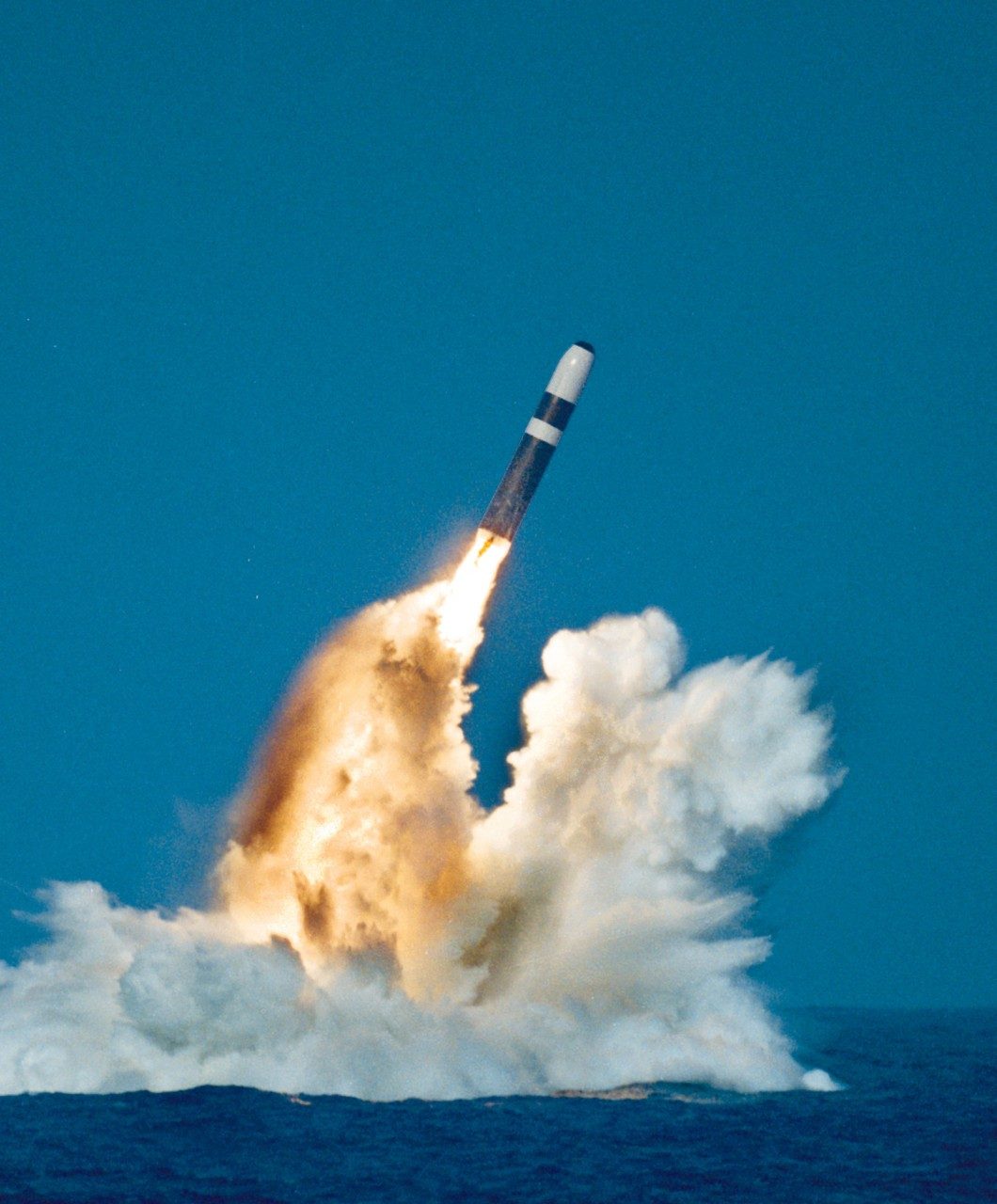December 17, 1955, representatives from several aerospace contractors gathered in Washington, D.C., at the behest of Rear Admiral William Francis “Red” Raborn for a briefing on a new program to develop a fleet ballistic missile weapon system for the United States. The program would investigate the feasibility of a defense system based on converting Intercontinental Ballistic Missiles (ICBMs) into submarine-launched weapons.
The admiral asked the attendees in the room to introduce themselves by writing their company names on the blackboard. Gene Root was the first to stride confidently to the board, writing LOCKHEED in capital letters and turned to face the room.
“We’re ready,” said Root. “Who’s next?”
It was the beginning of one of the most enduring government and industry partnerships. Lockheed became the Navy’s strategic missile contractor on December 27, 1955, and in the following year the company opened what is now Lockheed Martin Space Systems Company’s facility in Sunnyvale, California.

A Strategic Victory
The advent of the Fleet Ballistic Missile program introduced a profound strategic counterbalance that helped keep the Cold War from heating up. While a land-based missile silo could be targeted and a bomber shot down, the notion of a stealthy fleet of submarines roving silently undersea offered a critical deterrent that history would judge highly effective in preventing nuclear war.
In the early days of rocketry, it was challenging enough to keep the high-powered technology under control when launching from land. Underwater launches required vastly different technologies. Weight mattered. New nuclear warheads were developed by the Atomic Energy Commission that decreased the weight of the missiles by 30 percent, making transport on the subs easier. Compressed air streams ejected the missile from the submarine, and its first-stage engine ignited only when it was a safe distance from the sub. The missile was designed to clear the surface of water, when an internal guidance system would then kick in and lead the weapon to the target.
The hard work of visionaries like Lockheed executive Root and his team paid off on July 20, 1960, with the successful first launch of the UGM-27 Polaris Fleet Ballistic Missile from USS George Washington. From that first declaration on the chalkboard to the technological innovations that made Fleet Ballistic Missiles part of a triad of deterrence against war with the Soviet Union, less than five years had passed. Rear Admiral Raborn alerted President Dwight D. Eisenhower that the launch had been successful, and in November, USS George Washington embarked on the world’s first Fleet Ballistic Missile patrol.
While Lockheed focused on the missiles, the United States Navy’s other industry partners built guidance, navigation, launcher and fire control components of the weapon system and a new generation of submarines to carry them: Ship Submersible Ballistic Nuclear or SSBNs.

From Polaris to Trident
Over the ensuing years, Lockheed worked with the Navy to refine and evolve the submarine-launched ballistic missiles (SLBMs), and the Polaris’ range and warhead capability grew significantly. The United Kingdom’s Royal Navy was also equipped with Polaris missiles beginning with the A-3 model in 1968, the final model of its line. Succeeding Polaris in 1971, the Poseidon increased range and warhead capacity. In 1979 the first in the Trident series replaced Poseidon.
Advances in missile technology, development, and production have resulted in increased performance, affordability and sustainability. In 2006 Lockheed Martin opened a Fleet Ballistic Missile Post Production Center of Excellence in Cape Canaveral, Florida. The move improved cost effectiveness and supports a Life Extension Program that will see the current Trident II D5 model remain in use until 2042.
True to its predecessors, the D5 is destined to evolve. “Under the hood” improvements include the Trident’s guidance and avionics electronics which are currently being upgraded to leverage emerging technologies and operational efficiencies. It may continue to look like a D5 on the outside, but the interiors are being built for the future.

Sources and Additional Reading
- Boyne, Walter J. Beyond the Horizons: The Lockheed Story. New York: Thomas Dunne, 1998.
- Defense Industry Daily. “Trident II D5 Missile: Keeping UP with Changing Times.”http://www.defenseindustrydaily.com/Trident-II-D5-Missile-Keeping-Up-with-Changing-Times-06037/, accessed August 14, 2012.
- Lockheed Martin. “Lockheed Martin Opens Fleet Ballistic Missile Post Production Center of Excellence at Cape Canaveral.” http://www.lockheedmartin.com/us/news/press-releases/2006/january/LockheedMartinOpensFleetBallisticMi.html, accessed August 15, 2012.
- Lockheed Martin. “Lockheed Martin-built Trident II D5 Missile Achieves 137th Successful Test Flight.” http://www.lockheedmartin.com/us/news/press-releases/2012/march/lockheed-martin-built-trident-ii-d5-missile-achieves-137th-succe.html, accessed August 13, 2012.
- Lockheed Martin. “Trident II D5 Fleet Ballistic Missile (FBM).”http://www.lockheedmartin.com/us/products/trident-ii-d5-fleet-ballistic-missile--fbm-.html, accessed August 13, 2012.
- National Academy of Engineering. Memorial Tributes: National Academy of Engineering, Vol. 6, 1993.
- Simpson, Sylvia. Interview by The History Factory, August 13, 2012. Washington, D.C.
- Sloane, Melanie. Interview by The History Factory, August 16, 2012. Washington, D.C.




